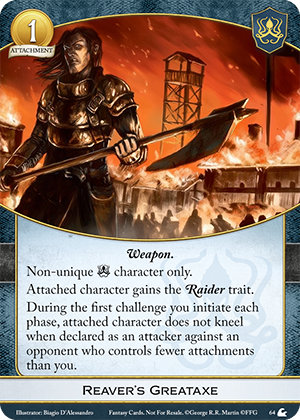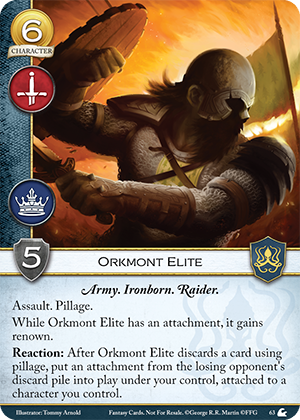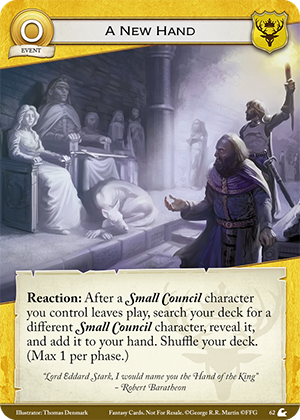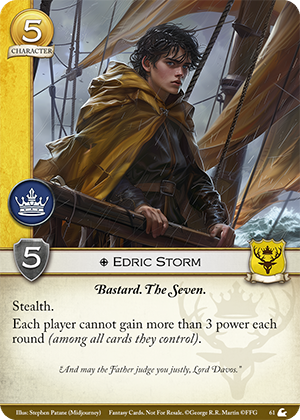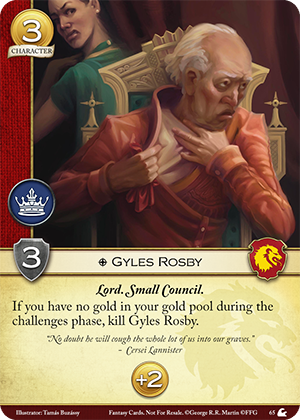
Rules FAQ
-
The kill effect is automatic and cannot be saved from or canceled. It can only be blanked.
-
If The First Snow of Winter or The Mad King's Command are revealed, Gyles Rosby will be killed before the forced reactions on those plots resolve, assuming you have no gold. He will also be killed before optional reactions like Lions of the Rock or The Eyrie (CoW).
-
Cards that allow you to spend gold "as if it were in your gold pool" during the challenges phase (like Casterly Rock (BtB) or Sweet Cersei) will not work to "save" Gyles.
-
If you spend all of your remaining gold to pay for a reaction to winning a challenge in which Gyles is participating, he will be killed and can potentially cause another character to be attacking or defending alone for the purposes of triggering card abilities (for instance, Jaqen H'ghar).
-
Interrupts to the challenges phase ending still happen during the phase. For example, if Lady Stoneheart triggers and you spend your last remaining gold to play Treachery, Gyles will immediately be killed. But delayed effects that happen "at the end of the phase" are no longer inside the phase. For example, if you spend all of your remaining gold for something like The Gold Price, Gyles will be just fine.
